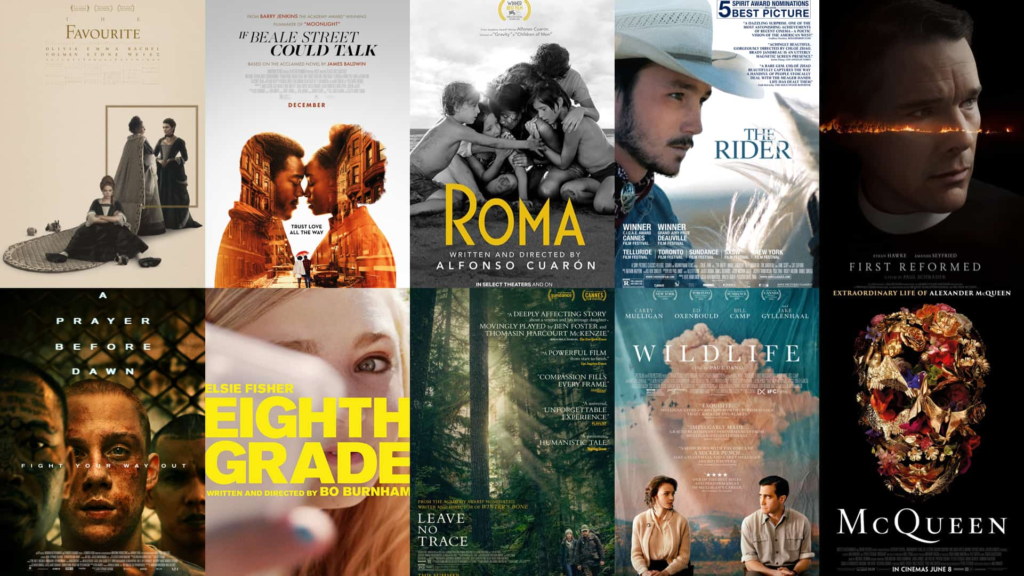
In the ever-evolving world of cinema, indie films hold a unique and cherished position. While mainstream blockbusters often dominate box offices and attract massive audiences, indie films continue to shine through their artistic merits, storytelling, and innovation. These films, often created on smaller budgets and outside the traditional studio system, have become essential to the landscape of modern cinema, allowing for bold creativity and risk-taking that many larger productions may shy away from.
This article will explore the value of indie films, spotlight some hidden gems, and analyze the artistic merits that make them so special. We’ll dive into how these films impact audiences, shape the industry, and reflect the diverse voices and visions of filmmakers from around the world.
1. What Makes an Indie Film?
Indie, or independent films, are typically defined by their production outside the major film studios. They often have smaller budgets, rely on funding from independent financiers or crowdfunding, and are not bound by the creative constraints that can accompany large studio involvement. While budget and scale can set indie films apart, what truly distinguishes them is the freedom they afford filmmakers to take risks with storytelling, casting, themes, and visual style.
a. Creative Freedom
Without the pressures of large studios and commercial expectations, indie filmmakers have more flexibility to explore unconventional narratives, complex characters, and experimental techniques. This creative freedom often leads to some of the most groundbreaking films. For instance, Moonlight (2016), which won the Academy Award for Best Picture, began as an indie production and went on to receive global acclaim for its raw, intimate portrayal of identity, race, and masculinity.
b. Budget Constraints Breed Innovation
Indie films, because of their often limited financial resources, have to find innovative solutions to production challenges. This can include unique shooting locations, innovative uses of natural lighting, or minimalist set designs. For example, The Blair Witch Project (1999) became a cultural phenomenon by using found-footage style and a low-budget marketing campaign to create a sense of realism and tension, helping it gross over $240 million worldwide on a budget of just $60,000.
2. Spotlighting Hidden Gems
While not all indie films gain widespread recognition, many deserve to be acknowledged for their artistic excellence. Below are a few hidden gems that stand out for their storytelling, direction, and impact:
a. The Florida Project (2017)
Directed by Sean Baker, The Florida Project is a heart-wrenching and beautiful depiction of childhood set against the backdrop of poverty. The film, shot near Disney World in Florida, follows a six-year-old girl and her young mother as they live in a motel. Its brilliant use of color and the contrast between the innocence of childhood and the harshness of poverty earned it critical acclaim. The film was lauded for its performances, especially Willem Dafoe’s portrayal of the motel manager, and it is a shining example of indie filmmaking that tells stories often overlooked in mainstream cinema.
b. Short Term 12 (2013)
Short Term 12, directed by Destin Daniel Cretton, offers an emotionally gripping look into the lives of workers and residents at a group home for troubled teens. The film’s success lies in its deep empathy for its characters and its poignant exploration of trauma and healing. Brie Larson, who later gained fame for her role in Room (2015), delivers a powerful performance, and the film was a breakout moment for her and other young stars, including Lakeith Stanfield and Rami Malek.
c. A Ghost Story (2017)
David Lowery’s A Ghost Story is a meditative and unconventional take on grief, time, and memory. It features a minimalistic plot and almost no dialogue, yet it creates a haunting and introspective atmosphere that lingers long after the credits roll. The use of a simple bedsheet as the ghost’s representation is both striking and symbolic, making this film a masterclass in how indie filmmakers can use limited resources to explore profound themes in visually and emotionally powerful ways.
3. Artistic Merits of Indie Films
One of the hallmarks of indie films is their commitment to artistry. Indie filmmakers are often more concerned with pushing creative boundaries than appealing to mass markets, and this results in films that can challenge, provoke, and inspire.
a. Complex and Nuanced Characters
Indie films are often praised for their rich character development, allowing for deeper explorations of human emotions, flaws, and relationships. Unlike mainstream films, which may prioritize action or spectacle, indie films tend to focus on the internal journeys of their characters. For instance, Lady Bird (2017) by Greta Gerwig is a coming-of-age indie film that is beloved for its relatable, multi-dimensional characters and the authentic portrayal of a mother-daughter relationship. The subtle performances and emotionally resonant dialogue allowed Lady Bird to transcend its indie roots and become an Oscar-nominated success.
b. Experimental Visual Styles
Indie films are frequently more experimental in their visual and narrative approaches. They often break away from conventional cinematic techniques, offering unique visual storytelling methods that heighten the emotional experience. For example, Terrence Malick’s The Tree of Life (2011) is an indie film that is visually breathtaking, blending abstract sequences, voiceovers, and philosophical musings on life, the universe, and spirituality. The film’s non-linear structure and stunning cinematography make it an evocative and unconventional piece of cinema.
c. Exploration of Social and Political Issues
Many indie films tackle pressing social, political, or cultural issues that may not be commercially viable in larger productions. These films provide a platform for marginalized voices and offer new perspectives on global issues. Films like Fruitvale Station (2013), directed by Ryan Coogler, highlight real-world issues of racial injustice and police violence in America. The film’s raw, personal narrative style allowed it to resonate with audiences on a deeper, more emotional level, sparking conversations around its subject matter.

4. The Role of Film Festivals in Promoting Indie Films
Film festivals are integral to the success of indie films. They provide a platform for indie filmmakers to showcase their work to wider audiences, critics, and industry professionals. Festivals like Sundance, Cannes, and Toronto International Film Festival have become launching pads for some of the most acclaimed indie films.
a. Sundance Film Festival: A Haven for Indie Filmmakers
Sundance has played a crucial role in promoting indie cinema, with many films, including Little Miss Sunshine (2006), Whiplash (2014), and Call Me by Your Name (2017), gaining recognition after premiering there. The festival is known for spotlighting bold, unique voices in cinema, often leading to wider distribution deals for films that might not otherwise reach mainstream audiences.
b. Cannes Film Festival: Elevating Art House Films
Cannes, while more international in scope, has a special focus on artistic and auteur-driven films, many of which fall under the indie category. Films like The Pianist (2002) by Roman Polanski and Blue Is the Warmest Colour (2013) have earned the coveted Palme d’Or, showcasing the critical acclaim that indie films can garner on the global stage.
5. Challenges Indie Films Face in a Mainstream Market
While indie films are lauded for their creativity and artistic value, they also face significant challenges in terms of distribution, marketing, and reaching audiences. Without the financial backing of major studios, indie films often rely on word-of-mouth, social media, and film festivals to gain visibility. Moreover, competing with big-budget films for screen time in theaters can be difficult, pushing many indie films to find success on streaming platforms.
a. Distribution and Marketing
Indie films often struggle to find wide distribution, and without massive marketing budgets, they rely on niche markets and grassroots campaigns to reach their audience. However, the rise of platforms like Netflix, Amazon Prime, and Hulu has provided a lifeline for many indie films, allowing them to reach global audiences without needing a traditional theatrical release.
b. Audience Reception
Though indie films are often critically acclaimed, they may not always find mainstream appeal. The slower pacing, experimental nature, or heavier themes may not resonate with viewers accustomed to the fast-paced action and spectacle of blockbuster films. However, there is a growing audience that seeks out indie films for their depth, emotional resonance, and authenticity, which continues to support and sustain the indie film market.
Conclusion: The Enduring Appeal of Indie Cinema
Indie films represent the heart and soul of cinema, offering a space for storytelling that is often more personal, experimental, and boundary-pushing than their mainstream counterparts. From hidden gems like The Florida Project to critically acclaimed films like Moonlight, indie films offer a unique cinematic experience that appeals to audiences seeking more than just entertainment—they offer art, emotion, and thought-provoking narratives.
While indie films face challenges in distribution and recognition, they continue to thrive, thanks in part to film festivals, streaming platforms, and a passionate audience that values the artistic merits of independent cinema. As long as there are filmmakers willing to take risks and audiences eager to engage with original, innovative stories, indie films will continue to be an essential and celebrated part of the film industry.
For more such content, keep visiting QAWire


